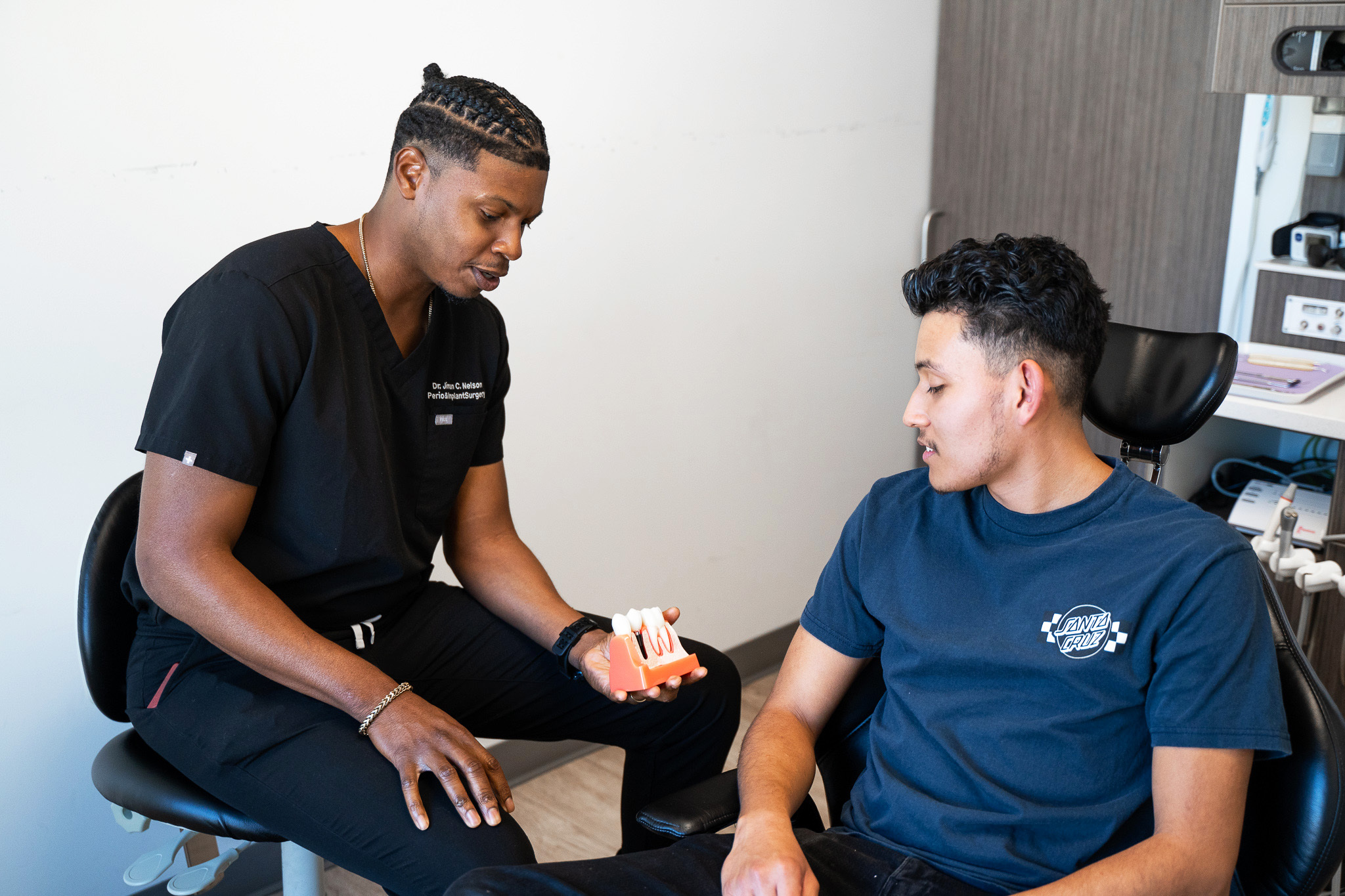A pretty smile doesn’t only enhances your beauty, but also helps to grab attention. But, this will be impossible if you don’t floss your teeth regularly.
A pretty smile doesn’t only enhance your beauty but also helps to grab attention. But, this will be impossible if you do not floss your teeth regularly. Imagine how embarrassing it could be to smile when a stranger signals that some food particles are on your teeth. Brushing your teeth doesn’t guarantee that your teeth will be free of plaque and food particles. In addition to brushing, flossing should also be a critical part of your daily dental cleaning routine.
When it comes to your dental health, you should not take chances. You should always keep your teeth and gum clean and healthy to prevent cavities and gum disease. And the amazing fact is that something simple like a string can help to keep your mouth free of food particles. Probably you may have heard or seen ‘Floss regularly’: A common statement all over the internet and at any dentist clinic. However, having baked information on the net doesn’t guide you on how you should floss your teeth, but today we will discuss everything you should know about flossing.
What is dental floss? This might be one of the questions lingering in your mind! This is a soft thread used to clean between the teeth by removing food particles and plaque that a toothbrush can’t reach. The thread is usually made of silk or other similar materials. Many types of dental floss are on the market, but not all are created equal. Some floss is more effective than others at removing plaque and bacteria from teeth and gums. Dentists and hygienists say that the best dental floss is the one that you will use regularly. So, find a type of dental floss that you like, and that is easy to use.
Everyone is more susceptible to needing dental floss. This is a must do procedure in caring for your dental health. As long you have teeth, you will need to floss them regularly to prevent plague from building up. You might assume because you brush regularly, you don’t need to floss, but you are wrong. No matter how powerful your toothbrush is, there are places in between the teeth it can’t reach. If you don’t floss, the food particles and plague will irritate your gum tissues and make your gum more sensitive to extreme temperatures.
When it comes to flossing, most people regard it as just an optional oral health habit. However, it should be complementary. In addition to brushing, you should floss at least twice a day. No matter how well you brush your teeth, you are still in danger of microorganisms and bacteria, because there are some places that a brush will not access.

Flossing regularly is the key to a pretty smile and a great dental appearance. The first step to removing the particles between your teeth is finding the right dental floss. There are waxed and unwaxed types of dental floss, and some may be flavored while others aren’t. Is up to you to select highly recommended floss as per your taste and preference, but you should also check whether the floss has been approved by the dental association. If the floss has the state dental association seal, it means it is effective and safe to use.
Some people have large spaces between the teeth, while others the teeth are closely together. A flat, wide dental tape can produce good results when used on spaced teeth, but for teeth that are very close, only thin floss can produce better results.
To floss your teeth properly, 15 to18 inches of floss will be required. Wrap most of the floss around your index or middle figure, then guide the floss between your teeth using the index or middle figure of your other hand.
Slide the floss between the teeth as you move back and forth. During the flossing process, the floss should make a curve (C). You should start from the gum-line and end with of the tooth in question. For the floss to remove even the particles that are in hiding, you will have to work down the gum-line. This will ensure all the particles, plaque, and bacteria are removed. On each tooth, you should use a fresh section of dental floss.
If you are a beginner or is a long time since your last floss, chances are your gums will bleed. However, don’t worry as this will stop with a regular routine. Finally, you should always floss the front and back of the teeth.
Do you feel food particles stuck between your teeth? This is one of the symptoms that you need dental floss. However, you may or may not feel the food particles. As discussed above dental floss can also be used to remove bacteria and plaque between your teeth. You don’t have to check any symptoms or signs for you to floss your teeth. As long as you have teeth, flossing should be a regular practice. In fact, flossing should be a must-do practice as part of maintaining your dental health. It helps to keep your teeth clean and free of harmful bacteria.
Houston | Katy | Montrose | West University Place | Greater Third Ward | Greater East End | North East Houston | Houston Heights | Central Northwest | Fairbanks | Acres Home | East Houston | Southeast Houston | Central Southwest | Fort Bend Houston | Brays Oaks | Meyerland Area | Sharpstown | Alief | Westchase | Memorial | Northwest Houston | Katyland | Whispering Lakes | Pine Lakes | Woodcreek Reserve
Visit us today at URBN Dental as a walk in patient or call us at 281-584-3123 for an appointment at a time of your choosing! Here is to permanent smiles and stronger teeth for all!
No Insurance? No problem.
© Copyright 2025 | Designed & SEO Optimized by The Doctors Marketing
Disclaimer: URBN Dental uses restorative materials such as Admira Fusion® by VOCO, which are free of BPA and Bis-GMA, and are not known to degrade into microplastics under normal oral conditions. While marketed as biocompatible and free of traditional plastic monomers, no dental material is guaranteed to be completely risk-free for all patients. This information is provided for educational purposes and does not constitute medical or regulatory advice.

Discover your perfect smile with a FREE Invisalign assessment.

Receive a complimentary 3D scan ($300 value) when you proceed with implant care.

Speak with our experts about your smile goals from the comfort of your home.
Discuss your smile goals with our experts—choose an in-office visit or a convenient 15-minute phone consult.

Quick, affordable care when you need it most.

Have questions about implants? Get personalized guidance in a brief phone call.